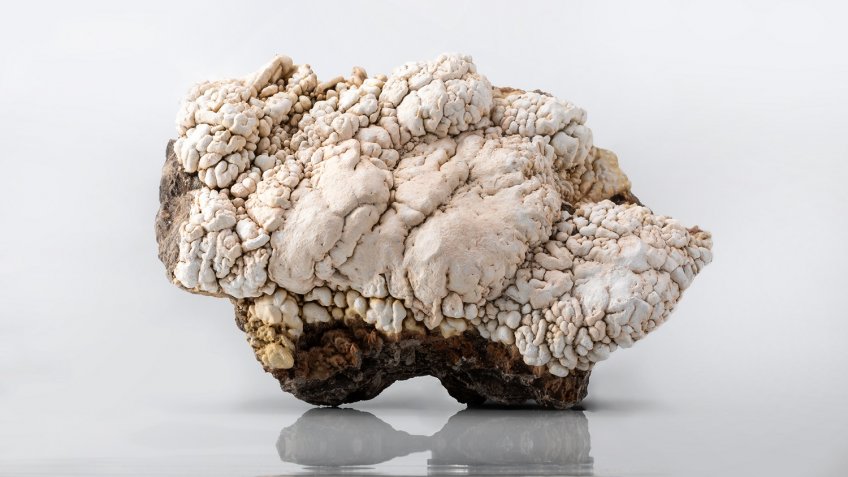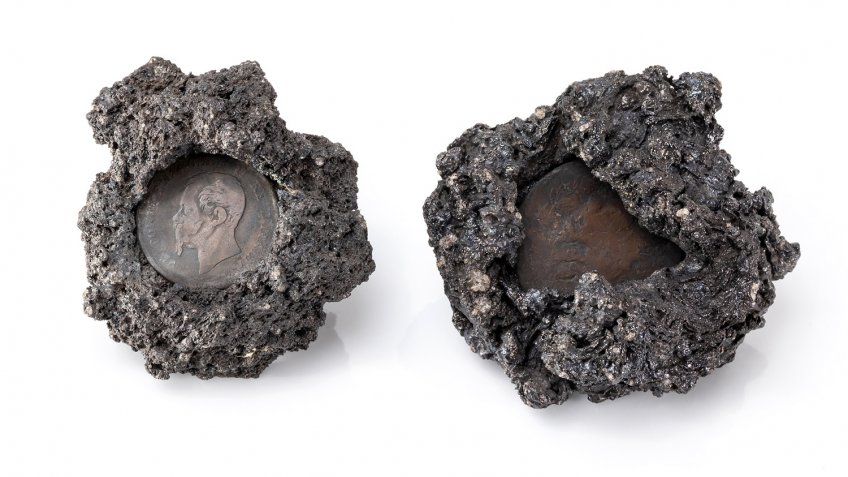The volcano Etna on the island of Sicily has recently thrown up an ash column 9 km high. The cloud covered several cities at once. At least 6 volcanoes became active in February and March, in Iceland, Ecuador, Guatemala, Indonesia as well as Russia. One has to remember the year 1816, which went down in history as "the year without summer". Or "one thousand eight hundred frozen to death", as it was nicknamed in the USA.
Back then, Western Europe and North America witnessed an exceptional natural anomaly. In March, average temperatures, even in the southern regions, continued to be winter temperatures. April and May saw an unnatural amount of rain and hail, while June and July saw frost. Snow lay in New York, New England and Switzerland, while Germany was plagued by severe storms and most rivers, including the Rhine, burst their banks.
The cold led to a catastrophic crop failure, a tenfold increase in grain prices and famine. Tens of thousands of Europeans migrated to the USA.
The unfolding events were also reflected in the arts. The English novelist Mary Shelley was spending the summer with friends at a villa near Lake Geneva, and as the bad weather meant they hardly ever left the house, they invented a pastime. Each one had to write a spooky story to read to the other. So Shelley wrote her famous novel Frankenstein, or the Modern Prometheus, and John Polidori wrote the first vampire fiction ever written.
It was not until over 100 years later, in 1920, that scientists led by physicist and climatologist William Humphreys discovered the cause of climate change. The cause was the eruption of Mount Tambora on the Indonesian island of Sumbawa in April 1815. The effect of a volcanic winter in the northern hemisphere was caused by a massive ash plume of 150 km³ into the atmosphere. It took time for it to spread, so the effects of the eruption did not become apparent until 1816.
The death toll from Tambora was a record 71 000. By comparison, 2,000 people died in the streets of Pompeii.
In 2009, a study of the isotopic composition of Arctic sea ice provided new evidence: six years before the fateful 'year without summer', another tropical eruption took place. It is not recorded in written records but did make a contribution. The combined effect of the two volcanoes was believed to have been the coldest of the previous 550 years, from 1810 to 1819.
But let's go back to the present day.
Fahradalsfjall, 40 km from Reykjavik, is the most spectacular volcano activated today, dormant for nearly 6,000 years. The country's authorities have imposed a state of emergency, temporarily banning inbound and outbound flights from Keblavik airport and blocking roads. Police have asked residents to stay away from the danger zone.
At first, Icelandic experts did not raise panic, as they assumed that the eruption would be short-lived. Moreover, several scientists, determined to demonstrate the non-seriousness of the situation, staged an unusual picnic at the foot of Fagradalsfjall. They carried out the necessary measurements and at the same time fried sausages on lava that exceeded the temperature of the best grill.
And then the researchers got the results of the samples... All indications are that the active process will not end soon and may yet have surprises. The magma was at an unprecedented depth for this region, at about 15 km. Moreover, the velocity of the underground lava flow is similar to that above the ground. By the way, the last prolonged eruption on the Reykjanes Peninsula dates back to the XIII century and lasted almost 30 years, from 1210 to 1240.
One can, of course, excuse picnickers, saying that they are used to this kind of news - there are more than 320 active volcanoes in Iceland. Not yet forgotten is Eyjafjallajökull, whose ash emissions in 2010 caused the cancellation of over 60,000 flights worldwide.
According to RosHydroMet chief scientist Roman Wilfand, ash and gases such as sulphur dioxide that enter the stratosphere function there for years. So we are talking about a cumulative effect. This disturbs the thermal balance of the Earth's surface and has a very serious effect on the climate. The solar energy is either absorbed by the dispersed ash composition or reflected back. The onset of climate cooling is most likely when volcanoes are active for a long time or many eruptions occur at once. In other words, as it is happening now.
In Russia, several volcanoes woke up in early spring. Ebeko volcano in the Northern Kurils produced a two kilometre pile of ash. And on March 29 it threw out ashes to a height of 3 km. The plume spread north-eastward a distance of up to 5 km. Moreover, lava flow descended from Klyuchevskaya Sopka on Kamchatka peninsula. The situation is still dangerous.
The first works of Soviet scientists in the field of volcanic dynamics were carried out exactly on this volcano. In the early 1930s, the Leningrad Mining Institute sent an expedition led by its graduate and professor Alexander Zavaritsky, during which they observed the eruption in the immediate vicinity for over a month. When they returned to the institute, they carried out numerous investigations on the basis of the samples obtained. Bombs, ash, lava, sand, crystalline sulphur, geyserite and other eruption products are now preserved in the Mining Museum.
In fact, there is a complete encyclopaedia of vulcanology: from scientifically significant exhibits brought back from the world's most interesting and largest volcanoes, to historical souvenirs.
Particularly interesting are the specimens delivered by the famous geographer Ivan Visloukh from China during the Russo-Japanese War and the products of the eruption of Vesuvius, dating from the early 20th century. For example, a 2 lira coin frozen in slag lava with the inscription: "Vittorio emanuele ii d´Italia", which was issued in 1861. Another example is the ash and sand samples collected during the same eruption but at different points in time, showing a consistent change in the composition of the ash and sand emanating from the eruption.
Nowadays, a number of scientists are developing the idea within the framework of influencing atmospheric chemistry and controlling solar radiation. The idea is based on observations of volcanoes and the effect they have on the climate. According to the researchers, if a certain composition of sulphur compounds can be kept dispersed in the stratosphere, solar energy will be absorbed and reflected back. In this way, the heat generated by the greenhouse gases would be balanced out. One option is to spray aerosols containing sulphates or other particles with reflectivity into the lower atmosphere, for example from helicopters or giant balloons. Scientists do not specify the chemical composition of such aerosols, saying only that "the reflectivity and average particle size in them would be close to natural aerosols erupted by volcanoes.
This controversial theory relates to geoengineering and is at this stage under discussion and process modelling.


